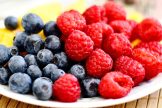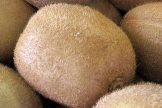
If you can grow apples you can grow raspberries, and why wouldn’t you? The sweet juicy fruit is delectable when picked ripe and warm from the canes, truly placing the taste of the sun on your tongue. Nutritionally dense and a fantastic snack for kids, raspberries require a small amount of preparation and ongoing care which will yield great results.
Cultivation
Berries are a long-term crop and it is worth preparing the soil well and removing all weeds before planting. Add plenty of well-rotted manure and compost in order to create a rich, well-drained, slightly acidic soil. If you have a heavy clay soil, build the beds up or add gypsum prior to planting. Remember: damp in summer, dry in winter. Mulch berries well to keep roots cool and moist, and to suppress weeds.
Plant your raspberries in a northerly to north-easterly aspect and avoid planting them in an area where you have grown tomatoes, capsicum and eggplants in the past three years to avoid the risk of Verticillium wilt.
Raspberries are gross feeders, feed with blood and bone or well-rotted manure in spring and autumn.
Pruning and training
Raspberry varieties fall into two categories: summer and autumn fruiting.
Summer fruiting varieties will fruit on two year old canes. The two year old canes are called floricanes and the new season canes are called primocanes.
Each year remove the floricanes that produced fruit and tie up the new season’s primocanes to a wire trellis. Tying the canes up in bundles can make them easier to manage.
The smaller autumn harvest will be produced on the tips of the primocanes and these can be trimmed to just below the fruit after harvest. The trellis may consist of two or three wires positioned about 50cm apart, strung securely between two sturdy posts.
Autumn fruiting raspberries can simply be cut back to ground level and the new spring canes tied up as they grow. Autumn fruiting raspberry bearing fruit on primocane – one year old canes.





